My experience at the Solomon R. Guggenheim Museum was not what I expected. I first researched the museum and saw it has twentieth-century modern and contemporary art. Truthfully, I do not know what that entails, but I assumed there would be some pretty landscape paintings I could look at and take a picture of. I could have chosen the common options of the MOMA, the Rubin, or the Whitney, but I wanted to visit a museum that many of my peers did not go to and discover something new.
Upon entering the museum, the first thing I noticed was the architecture of the building, which was more interesting than some of the displays and exhibits. From the outside, it looks like a rotunda, and inside of the museum, there was a spiral ramp rising to a domed skylight. Immediately, I noticed the words circling the ramp, and I felt uncomfortable by some of the phrases. The display, titled Light Line, was something the museum wanted the public to notice because it addresses modern-day political division over women’s rights, the violence of war, climate justice, etc. “The words invite thinking on biases and beliefs; the work is a challenge to power abused.” I understand how the words are implicitly fighting against abused power, but I experienced more discomfort and tension than discovering a new perspective. I realized that this display was meant to showcase how every aspect of our life is either being controlled, watched, or both. The question is who is pulling the strings and why do we as a society continue to let them dictate our lives? My main takeaway from this display was that life should be approached with caution because your actions are a source of information for someone else, like the government who is always listening and watching.
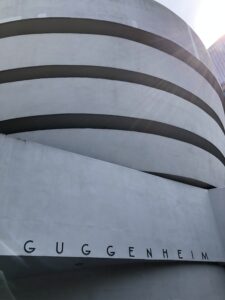
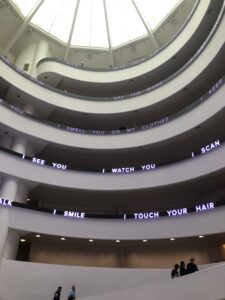
As I made my way up the ramp, I saw some oil paintings that provided a sense of peace and serenity when I looked at them. There were paintings of fruit and landscapes, and I was able to connect them to our discussion in class about Berger’s views on oil paintings. Some can argue that they were pained for monetary value, but at the time the painting was created, the artist could have been implying a message with their choice of subject. It’s up to us to decipher that message and offer a new perspective to art that was created over 100 years ago. What really excited me was that I saw paintings created by Vincent Van Gogh and Pablo Picasso. I’m familiar with these artists, so it’s always intriguing to see their other works that are not as common. It was good to have that change in emotion from disturbing to tranquility.
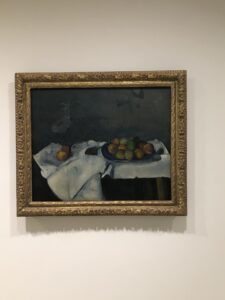
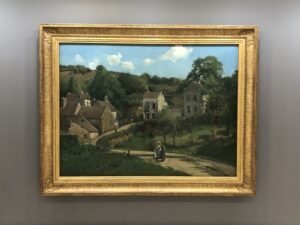
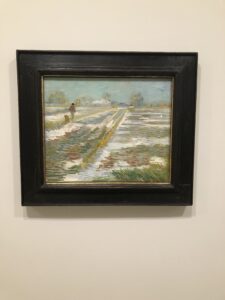
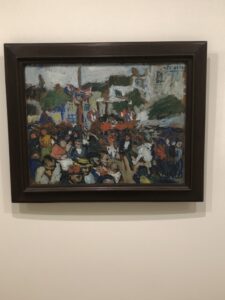
The exhibit that stood out to me the most was a four-wall display of former President Donald J. Trump’s tweets engraved on metal sheets. The metal sheets were arranged chronologically, starting with his tweets from the beginning of his presidency in January 2017. On the last wall, the metal sheets started to curve downwards and there was a pile of them on the floor. I took the time to read each tweet to understand Trump’s views when he was in office, and I found myself alternating between agreeing and disagreeing with his statements. The metal sheets on the floor were dated 2020, indicating the end of his presidency. This display was a political message conveying that his words were being censored and ignored by the time his presidency ended. I found it more interesting how a large number of people also stopped and read every tweet, regardless if they agreed or disagreed with his views.

Overall, this museum portrayed its exhibits in either a political, confusing, or vulgar manner. There was not that much art that I enjoyed looking at, but the select ones that I found were the ones that I spent more time analyzing and reading the attached blurb.


